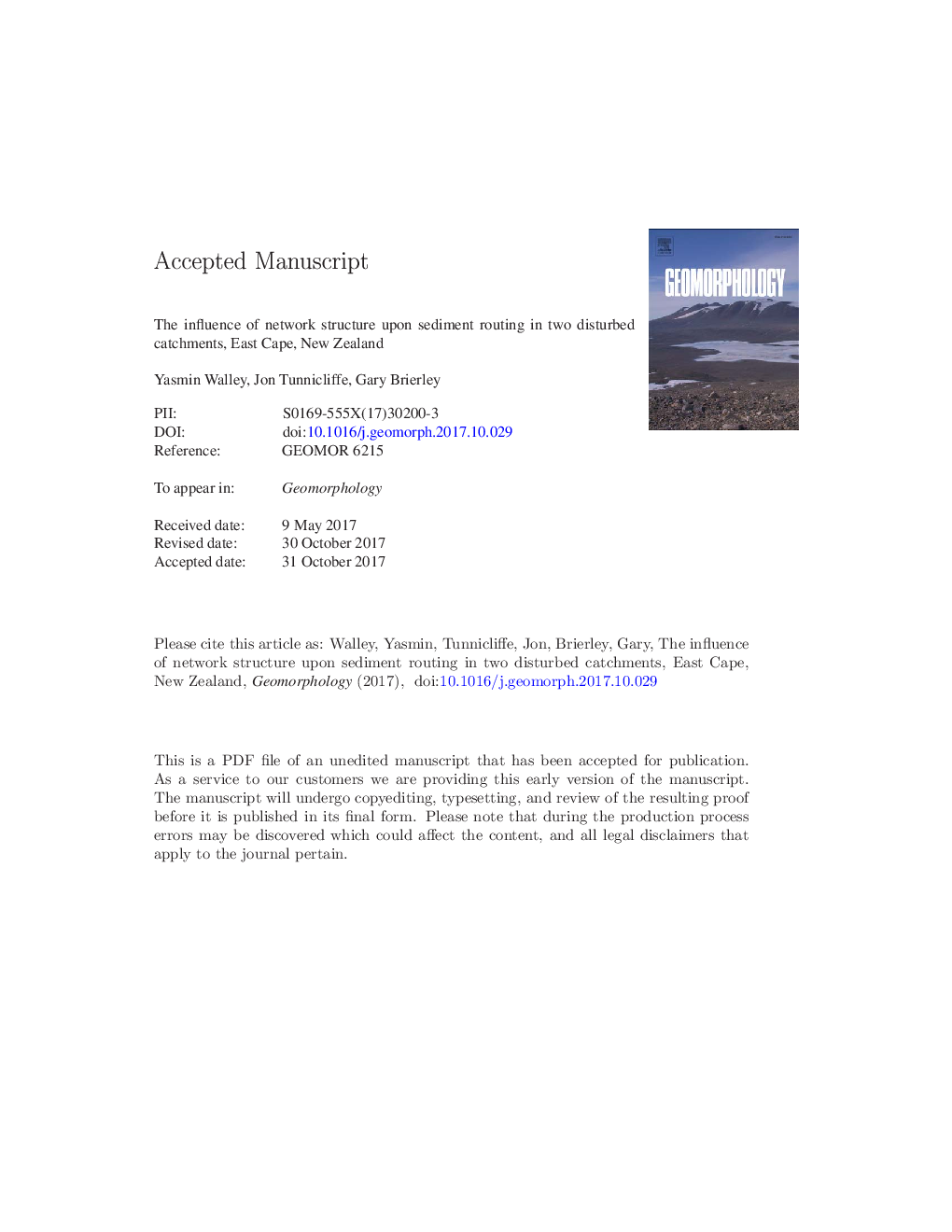| Article ID | Journal | Published Year | Pages | File Type |
|---|---|---|---|---|
| 8908101 | Geomorphology | 2018 | 46 Pages |
Abstract
Lateral inputs from hillslopes and tributaries exert a variable impact upon the longitudinal connectivity of sediment transfer in river systems with differing drainage network configurations. Network topology influences channel slope and confinement at confluence zones, thereby affecting patterns of sediment storage and the conveyance of sediments through catchments. Rates of disturbance response, patterns of sediment propagation, and the implications for connectivity and recovery were assessed in two neighbouring catchments with differing network configurations on the East Cape of New Zealand. Both catchments were subject to forest clearing in the late 1940s and a major cyclonic storm in 1988. However, reconstruction of landslide runout pathways, and characterization of connectivity using a Tokunaga framework, demonstrates different patterns and rates of sediment transfer and storage in a dendritic network relative to a more elongate, herringbone drainage network. The dendritic network has a higher rate of sediment transfer between storage sites in successive Strahler orders, whereas longitudinal connectivity along the fourth-order mainstem is disrupted by lateral sediment inputs from multiple low-order tributaries in the more elongate, herringbone network. In both cases the most dynamic ('hotspot') reaches are associated with a high degree of network side-branching.
Related Topics
Physical Sciences and Engineering
Earth and Planetary Sciences
Earth-Surface Processes
Authors
Yasmin Walley, Jon Tunnicliffe, Gary Brierley,
